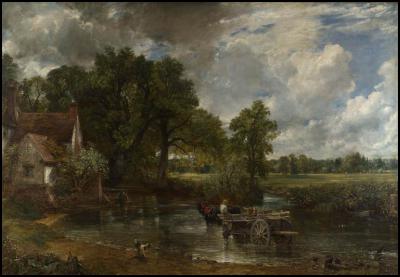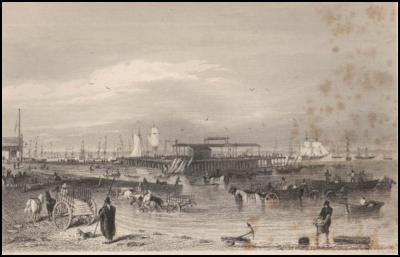Parody of famous Constable uncovered with NZ connection
Media Release
04 July 2012
Earliest parody of famous Constable
uncovered – with New Zealand connection
Recently voted as one of the most popular paintings in
any British gallery, John Constable’s The Hay Wain
achieved instant fame when it was put on exhibition at the
Royal Academy in 1821.
New Zealand historian at the Auckland University of Technology, Professor Paul Moon, who has been conducting research on the nineteenth-century artist Augustus Earle (1793-1838) came across an engraving by Earle that he believes is the earliest parody of Constable’s masterpiece. Earle lived in New Zealand in 1826-7.
“Something stuck in my mind about the Earle engraving,” explains Professor Moon. “I had the feeling that the work was familiar, even though it was the first time I had laid eyes on it.” He returned to the image a few days later, and then suddenly realised that the Earle picture resembled Constable’s The Hay Wain, and that this was more than just coincidence.
“Initially,” says Professor Moon, “it was just the contour of the shores in both pictures where the resemblance was obvious, but the more I studied the two images, the more other similarities emerged”.
Among the other
elements that Earle replicated from The Hay Wain are:
• a two-wheel cart being drawn through shallow water
from right to left of the picture;
• a dog positioned
in the bottom left foreground;
• the placement and
scale of a building on the left edge of the work and the
open space on the right edge;
• the proportion of land
and sky;
• the location of debris on the foreshore;
• the curve of the waterway;
• a man in a small
wooden boat on the far right.
However, while Constable’s painting was of a drowsy pastoral vista in rural England, Earle’s image was almost a perversion of such a scene, with the setting made to look grimy. Professor Moon says that Earle probably made this parody to puncture the romanticism of labouring scenes, of which The Hay Wain was the most popular example at the time.

John
Constable, The Hay Wain, 1821

Augustus Earle,
The Mole at Montevideo, 1832


 Health Coalition Aotearoa: New Bill A Vital Step Towards Tobacco-Free Future In Aotearoa
Health Coalition Aotearoa: New Bill A Vital Step Towards Tobacco-Free Future In Aotearoa National Youth Theatre: 140 Christchurch Kids Shine In National Youth Theatre’s Historic CATS Premiere
National Youth Theatre: 140 Christchurch Kids Shine In National Youth Theatre’s Historic CATS Premiere NZ Symphony Orchestra: NZSO To Tour Masterworks By Mozart, Beethoven, Haydn And More
NZ Symphony Orchestra: NZSO To Tour Masterworks By Mozart, Beethoven, Haydn And More Journal Of Public Health: Vape Shops Cluster Around Schools
Journal Of Public Health: Vape Shops Cluster Around Schools Timaru District Council: Aigantighe Art Gallery Hosts An Iconic Robin White Touring Exhibition
Timaru District Council: Aigantighe Art Gallery Hosts An Iconic Robin White Touring Exhibition Victoria University of Wellington: Dame Winnie Laban Awarded Honorary Doctorate Recognising Achievements For Pasifika
Victoria University of Wellington: Dame Winnie Laban Awarded Honorary Doctorate Recognising Achievements For Pasifika 